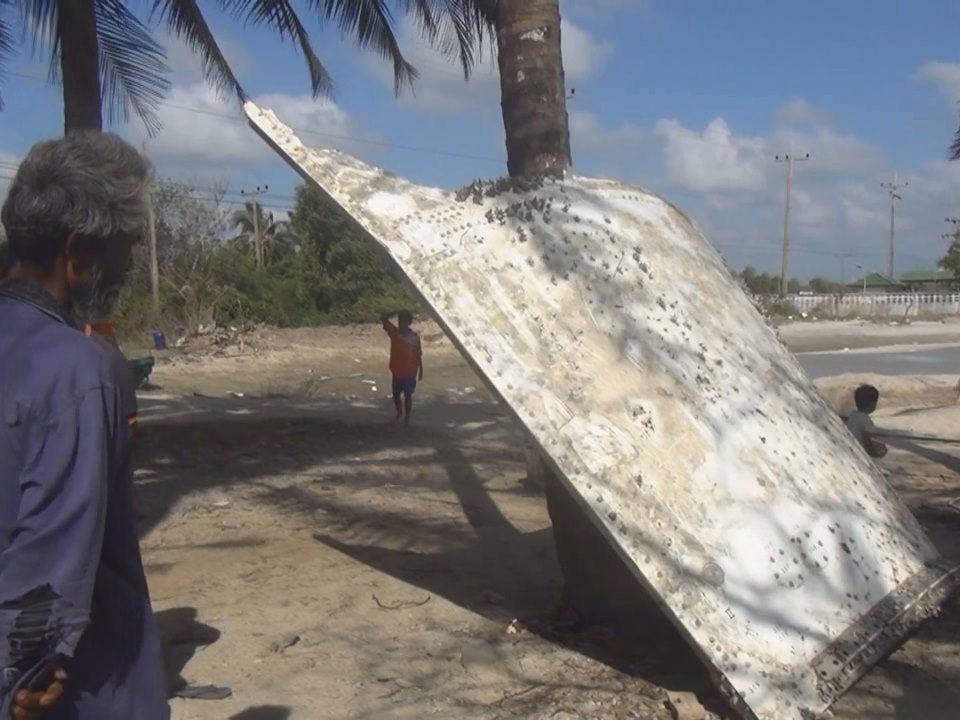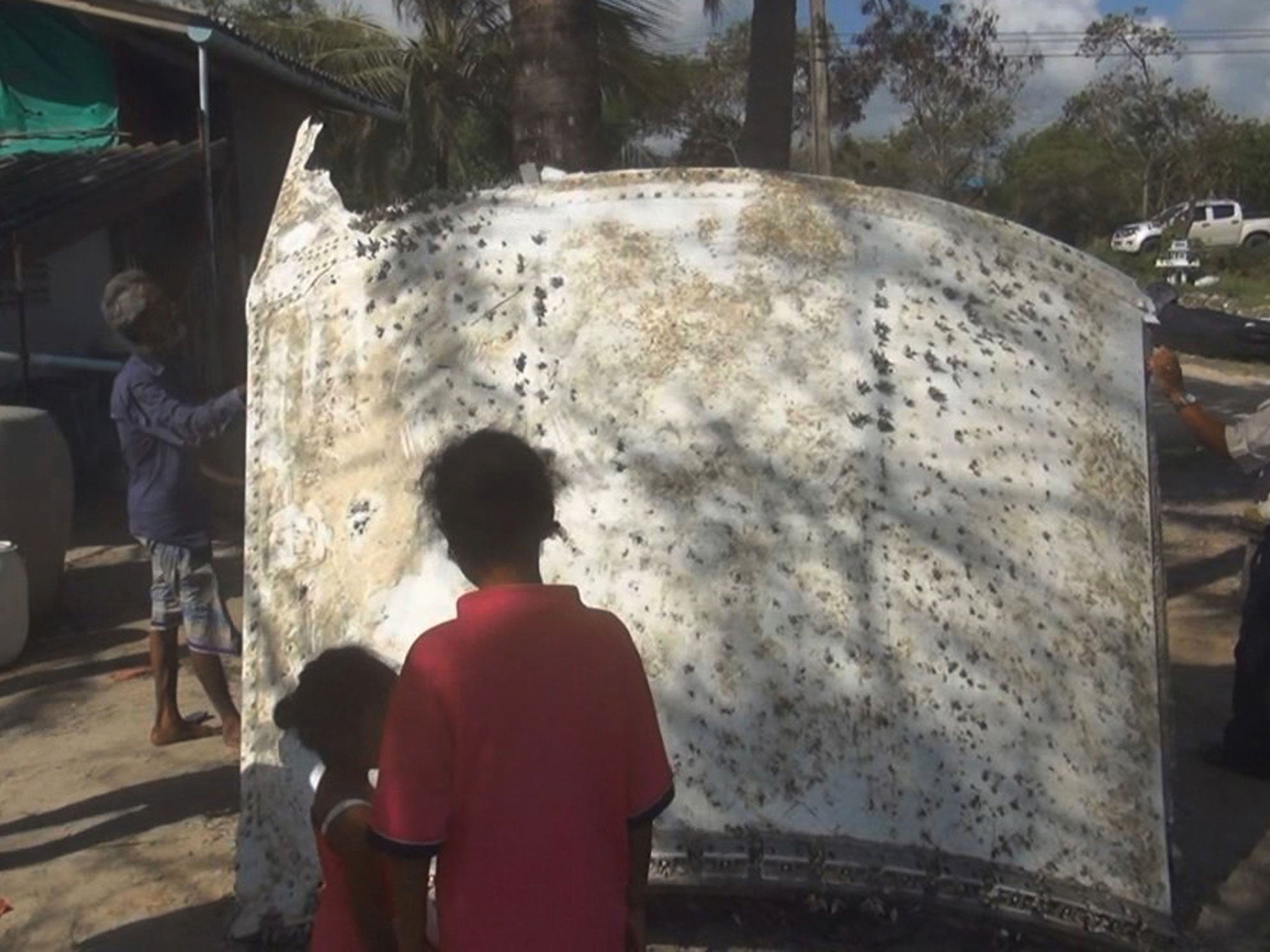Suspected MH370 debris found on Thai beach is ‘highly likely’ to be from Japanese rocket
The piece of metal is almost certainly part of a Japanese H-IIA or H-IIB rocket

Your support helps us to tell the story
From reproductive rights to climate change to Big Tech, The Independent is on the ground when the story is developing. Whether it's investigating the financials of Elon Musk's pro-Trump PAC or producing our latest documentary, 'The A Word', which shines a light on the American women fighting for reproductive rights, we know how important it is to parse out the facts from the messaging.
At such a critical moment in US history, we need reporters on the ground. Your donation allows us to keep sending journalists to speak to both sides of the story.
The Independent is trusted by Americans across the entire political spectrum. And unlike many other quality news outlets, we choose not to lock Americans out of our reporting and analysis with paywalls. We believe quality journalism should be available to everyone, paid for by those who can afford it.
Your support makes all the difference.A piece of debris found on a Thai beach is almost certainly from a Japanese rocket, not the missing Malaysia Airlines Flight 370 as has been suggested.
Mitsubishi Heavy Industries said the piece of metal is “highly likely” to be part of a Japanese H-IIA or H-IIB rocket launched from southern Japan, following an initial examination of photos and videos of the object.
The 2x3-metre piece of curved metal, crusted with barnacles and weighing about 100 kilograms, was found by fishermen on Saturday after washing ashore at Pak Phanang in Nakhon Si Thammarat province, about 800km south of Bangkok.
The discovery sparked speculation it may have come from the missing jet MH370, which disappeared while flying from Kuala Lumpa to Beijing in March 2014 with 239 people on board.
So far the only piece of wreckage to be recovered from the plane washed up on Reunion Island in July 2015.

MHI spokeswoman, Sayo Suwashita, said officials are trying to determine which rocket the debris may come from and its launch date.
Rocket debris falls into the ocean after every launch, Ms Suwashita added. Most is collected but sometimes pieces can be found some distance from the launch site, including in foreign waters.
The placement of bolts and the numbers etched on the debris resemble the honeycomb launch fairing of a Japanese H-IIA rocket, a liquid fuelled launch system used to transport satellites and space probes, according to VOA news.
Aerospace consultants have said the overall shape and design are that of a H-IIA interstage.
Seven H-IIA's have been launched in the past two years from Japan's Tanegashima Space Centre and the condition of the debris suggests it has been in the ocean for a year or more, according to specialists.
Further investigation would be necessary to confirm precise details, MHI in Tokyo told VOA.
Malaysian Transport Minister Liow Tiong Lai said on Sunday the search for the missing jet is ongoing in the Indian Ocean and the second phase is due to be completed by June.
Australia has led a multinational search, which so far has cost more than $120 million.
The Australian Transport Safety Bureau announced on Monday the search of 120 square kilometres of seabed, where the Boeing 777 is said to have crashed, had been set back after a ship lost its sonar equipment.
Additional reporting by Associated Press
Subscribe to Independent Premium to bookmark this article
Want to bookmark your favourite articles and stories to read or reference later? Start your Independent Premium subscription today.
Join our commenting forum
Join thought-provoking conversations, follow other Independent readers and see their replies
Comments